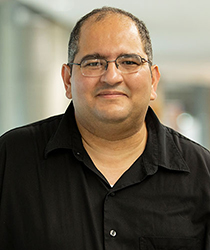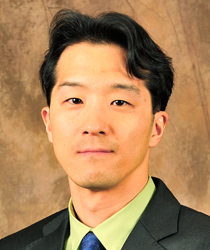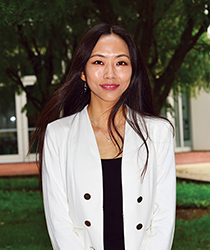 |
 Treating patients with severely compromised lung functions presents a cruel dilemma: although such patients need a mechanical ventilator to help them breathe, the ventilator itself can also cause lung injury, compounding the problem. Treating patients with severely compromised lung functions presents a cruel dilemma: although such patients need a mechanical ventilator to help them breathe, the ventilator itself can also cause lung injury, compounding the problem.
A team of UMD engineers, in collaboration with University of Maryland Medical System (UMMS) surgeon Joseph S. Friedberg, has been working to develop an alternative. By circulating oxygenated perfluorocarbon through a patient’s abdominal cavity, doctors can in effect create a “third lung.”
“The idea is to pump an oxygen-rich liquid into the cavity and then rely on the oxygen’s diffusion into the patient’s blood vessels, along with the diffusion of carbon dioxide out of the blood vessels,” explains UMD mechanical engineering professor Hosam Fathy.
 He and fellow UMD professors Jin-Oh Hahn (mechanical engineering, Fischell Institute for Biomedical Devices) and Miao Yu (mechanical engineering, Institute for Systems Research) are handling the engineering aspects of an idea first conceived by Friedberg, who is Charles Reid Edward Professor of Surgery at the University of Maryland School of Medicine (UMSOM) and Thoracic Surgeon-in-Chief at UMMS. With help from a National Science Foundation (NSF) EAGER grant, they conducted preliminary research that demonstrated the efficacy of the approach. He and fellow UMD professors Jin-Oh Hahn (mechanical engineering, Fischell Institute for Biomedical Devices) and Miao Yu (mechanical engineering, Institute for Systems Research) are handling the engineering aspects of an idea first conceived by Friedberg, who is Charles Reid Edward Professor of Surgery at the University of Maryland School of Medicine (UMSOM) and Thoracic Surgeon-in-Chief at UMMS. With help from a National Science Foundation (NSF) EAGER grant, they conducted preliminary research that demonstrated the efficacy of the approach.
Now, the NSF has awarded the multi-institutional team a new collaborative, Growing Convergence Research (GCR) grant, totaling $3.6 million, to perfect the "third lung." GCR was identified as one of 10 Big Ideas by the NSF, which serves as a means for solving vexing research problems, in particular, complex problems focusing on societal needs.
 "The concept is Friedberg’s, and he’d already successfully demonstrated it before coming to us,” Fathy said. ”But we can improve it in ways that make it more feasible medically as well as more cost-effective.” "The concept is Friedberg’s, and he’d already successfully demonstrated it before coming to us,” Fathy said. ”But we can improve it in ways that make it more feasible medically as well as more cost-effective.”
Among other contributions, the UMD engineers are devising ways to control pressures, temperatures, and flow rates more precisely, and creating a sophisticated data acquisition system that can track the entire process. Fathy’s colleague Yu is developing sensors that can accurately measure dissolved concentrations of gases. Fathy and Hahn, meanwhile, are working on control algorithms for the system.
Although the team has been spurred by the need to help save lives during the pandemic, their research has much broader applicability, according to Friedberg. “Long term, we believe this technology could find a standard role in the treatment of any patient with recoverable lung injury from any cause,” he said.
Earlier this year, two members of the project team, Hahn and Friedberg, were selected as mentors for a Fischell Institute Young Investigator Fellowship supporting the team’s work on the project. Through the fellowship program, Hahn and Friedberg are mentoring two young investigators, Hyun-Tae Kim and Joshua Leibowitz. Kim is focusing on PFC gas concentration sensor development while Leibowitz studies ways to optimize the Third Lung technology.
Photos, from top: Dr. Hosam Fathy, Dr. Jin-Oh Hahn, Dr. Miao Yu
Related Articles:
'Perfect adherence' to COVID vaccine prioritization hampering distribution says Mike Ball
UMD developing COVID-19 decision making tools for colleges
New Markov chain predictive model aids COVID-19 decisionmakers
Data visualization aids the public's pandemic understanding
Journal names statistical work on environmental extremes to its 'selected articles' list
AID India humanitarian group living up to its name in COVID crisis
Wu, Milton receive NSF funding to improve telemedicine
Maryland Engineers Receive Coronavirus Research Seed Fund Awards
Spurring research group creativity in the time of COVID-19
Public health planners: Free resources for emergency health clinics
September 29, 2021
|

